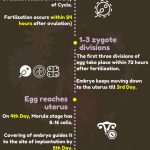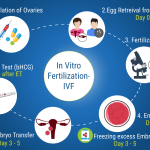How Far Along Am I with IVF? Your Guide to Tracking Your Journey
Starting an in vitro fertilization (IVF) journey is like stepping onto a roller coaster—exciting, nerve-wracking, and full of twists you didn’t see coming. One question that pops up a lot during this ride is, “How far along am I?” Whether you’re waiting for that first ultrasound or counting the days after an embryo transfer, figuring out where you stand can feel tricky. Don’t worry—I’ve got you covered. This guide will walk you through every stage of IVF, break down how to track your progress, and give you fresh insights to make sense of it all. Let’s dive in and map out this adventure together!
What Makes IVF Timing Different?
Pregnancy timing with IVF isn’t like the natural way. When you conceive without assistance, doctors usually count from the first day of your last period—about 40 weeks total. But IVF flips that script. Since your eggs are retrieved, fertilized in a lab, and transferred back to you, the starting line shifts. Your “how far along” depends on specific moments in the IVF process, like egg retrieval or embryo transfer day. It’s a little like baking a cake—you don’t start the timer until the batter’s in the oven, right?
The cool part? IVF gives you a more precise idea of when conception happens. No guessing about ovulation here! But it also means you need to tweak how you think about pregnancy weeks. Let’s break it down step by step so you can pinpoint exactly where you are.
The IVF Timeline: Where Are You Right Now?
IVF isn’t a one-day deal—it’s a process with distinct phases. Each one has its own milestones, and knowing them helps you figure out how far along you are. Here’s the rundown:
Phase 1: Ovarian Stimulation (Days 1-14)
This is where it all begins. You’ll take fertility meds to get your ovaries to produce multiple eggs. It usually lasts about 10-14 days, with regular checkups to see how those follicles (the sacs holding your eggs) are growing. Think of it like tending a garden—you’re nurturing those eggs until they’re ready to bloom.
- How Far Along? At this point, you’re not pregnant yet. This is prep time, so your “weeks pregnant” counter hasn’t started.
- What to Watch For: Your doctor tracks follicle size with ultrasounds. When they hit about 18-20 millimeters, you’re close to the next step.
- Tip: Keep a journal of your appointments—it’ll help you feel in control during this busy phase.
Phase 2: Egg Retrieval (Day 0)
Once your eggs are ready, your doctor retrieves them. This is a big day! It’s usually 36 hours after a “trigger shot” (a hormone injection to ripen the eggs). Picture it as harvest day—those eggs are finally collected.
- How Far Along? Still not pregnant yet. This is the moment your future embryo starts taking shape, but the clock for pregnancy hasn’t ticked on.
- Fun Fact: According to the CDC, over 300,000 IVF cycles happened in the U.S. in 2021, with egg retrieval being a key step for each one.
Phase 3: Fertilization and Embryo Growth (Days 1-5 or 6)
Now the magic happens in the lab. Your eggs meet the sperm, and if all goes well, they turn into embryos. These little champs grow for 3-5 days (sometimes 6) until they’re ready for transfer. Day 3 embryos have about 6-8 cells, while day 5 ones are blastocysts—more developed and often stronger.
- How Far Along? You’re still pre-pregnancy here. The embryos are growing, but they’re not in your body yet.
- Pro Tip: Ask your clinic how many embryos fertilized successfully—it’s a sneak peek at what’s ahead.
Phase 4: Embryo Transfer (Day 3 or 5)
This is the day your embryo (or embryos) gets placed into your uterus. It’s a quick procedure, kind of like a high-stakes delivery drop-off. Whether it’s a day 3 or day 5 transfer depends on your doctor’s plan and how your embryos are doing.
- How Far Along? Here’s where the counting starts! After transfer, you’re technically in the “two-week wait” (more on that soon). If it works, this is day zero of your pregnancy journey.
- Did You Know? A 2021 study from the American Society for Reproductive Medicine found day 5 transfers often have higher success rates—up to 50% for women under 35.
Phase 5: The Two-Week Wait (Days 1-14 Post-Transfer)
The infamous two-week wait (TWW) is when you’re waiting to see if the embryo sticks. It’s about 9-14 days until a pregnancy test can confirm things. This stretch can feel endless, but it’s when implantation might happen—usually 6-10 days after transfer.
- How Far Along? If implantation occurs, you’re about 2-3 weeks pregnant by the end of the TWW, counting from transfer day.
- Survival Tip: Distract yourself with light activities—binge a show, knit, or walk. Stress won’t change the outcome, but it can make the wait tougher.
Phase 6: Pregnancy Confirmation and Beyond
A positive test means you’re officially pregnant! Your doctor will schedule a blood test (hCG levels) and later an ultrasound (around 6-7 weeks from transfer) to check on your little one. From here, it’s more like a typical pregnancy timeline.
- How Far Along? Add 2 weeks to the days since your transfer. For example, 14 days post-transfer = about 4 weeks pregnant.
- Heads Up: Early ultrasounds might show a gestational sac first, then a heartbeat a week or two later.
How to Calculate Your IVF Pregnancy Weeks
Now that you’ve got the timeline, let’s make it personal. Calculating how far along you are with IVF is simpler than it sounds. Here’s the trick: it’s all about the embryo’s age and transfer day. Grab a calendar and follow along!





